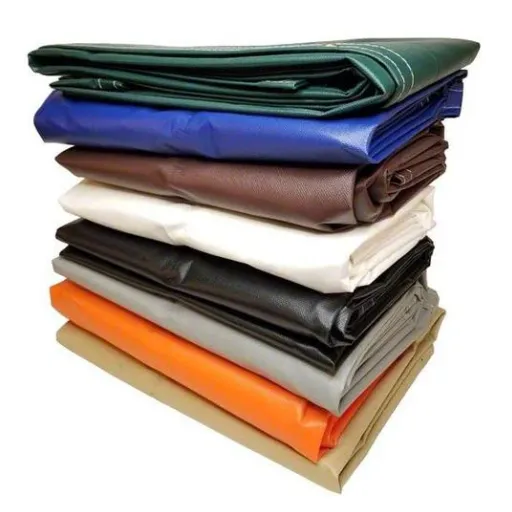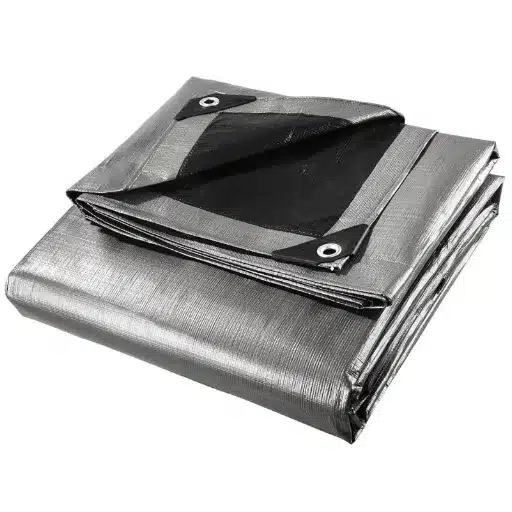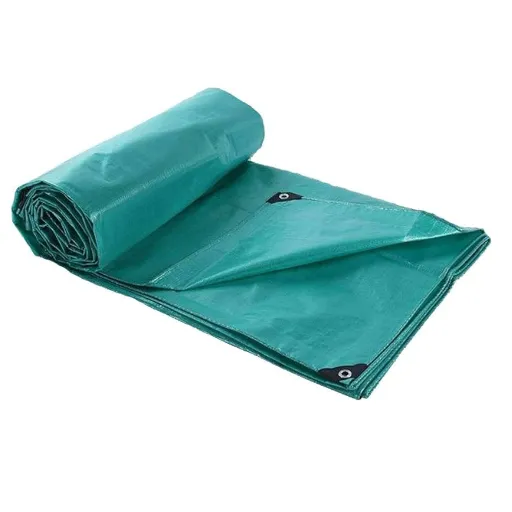When it comes to protecting goods from the elements, tarps stand as an extremely versatile option. But not every waterproof tarp can guarantee water protection. This difference can gravely affect the tarp’s efficacy in various applications-from the protection of outdoor gear to the covering of building material-a worthy distinction this article delves into, bringing forth the functional distinctions of waterproof and water-resistant tarps and their application in different conditions, guiding you toward selecting just the right tarp for the task at hand.
Introduction to Tarps and Their Uses
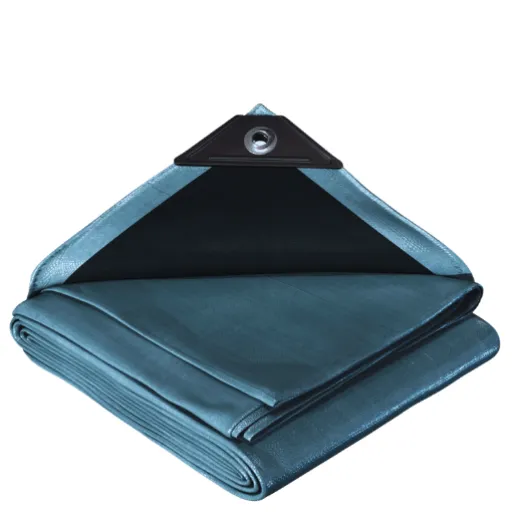
What Is a Tarp?
A tarp, actually an abbreviated form of tarpaulin, is a large, versatile sheet that can be used for protection. The tarps are mostly made of tough fabrics such as polyethylene, canvass, or vinyl to resist water, wind, ultraviolet rays, and dirt. Modern tarps have reinforced edges with many grommets so that they can be tied down securely for temporary or permanent use. According to top search trends and data, tarps are widely used in industries. A few common usages include covering construction sites, protecting goods during transport, creating shelters, or just putting them down as a groundsheet in the outdoors. The right kind of tarp for the job depends on the parameters of such considerations as water resistance, tensile strength, and UV resistance; hence, tarps remain handy tools anytime real protection from the elements is needed.
Common Applications of Tarps
Keeping industries abreast of the imperfections of changing times display certain innovative uses for these versatile tools. From recent insights on ‘s search data, some of the frequent queries or applications appear to revolve around their utilization in farming, disaster response, and recreation.
- 🌾 Agricultural Use:
In agriculture, tarps are used for silage cover, keeping crops away from weather impediments, and assisting in ground moisture retention. Heavy-duty polyethylene tarps are very popular because of their durability and great UV resistance, ensuring long performance in outdoor atmospheres. - 🆘 Disaster Relief and Emergency Shelters:
Tarps remain highly useful in disaster situations at the wash when primary shelters must be hastily erected, damaged structures covered, and urgent necessities ensured against further damage by rain or debris. They are lightweight and easy to deploy in emergencies. - 🏕️ Recreational Use:
Backpackers use these tarps under campgrounds and hiking trails as waterproof covers against rain, or as ground cloths to prevent moisture seepage. Modern tarp designs now include a reflective layer to retain heat for use in extreme conditions.
💡 Trend Alert: Growing interest in eco-friendly tarps from trends data indicates that there is a shift in consumer demand toward sustainable materials. This will spawn the need for environmentally-conscious tarpaulin solutions in fulfilling functional requirements and green modern-day standards.
Some water protection is needed in tarps.
Water protection is among the few key functions of tarps, serving to prevent water damage and extending the malleability or durability of the materials or objects being covered. Recently, provided by the online searches, there was an increased interest in intending for “waterproof tarpaulins” in the past year, especially from areas which face unpredictable weather patterns. This rising demand has now put in greater emphasis on technologies capable of rendering an effective waterproofing mechanism, including such examples as reinforced polyethylene (PE) coatings and welded seams, where the tarpaulin needs to be pressed hard for water resistance. Modern consumers thus demand tarps that not only shed moisture but are capable of withstanding rough conditions without allowing any permutations of their flexibility or ease of use.
By addressing these concerns, manufacturers will be able to develop products to suit market applications, ensuring that their product is still able to perform well and remain highly competitive. The added waterproof feature, as such, remains a deciding factor in consumer expectations, going to protect very much wished-for and cherished sensitive materials from elements.
Understanding Waterproof vs Water-Resistant Tarps
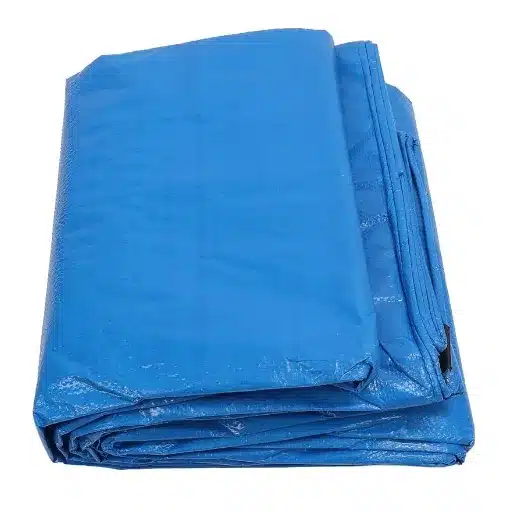
Defining Waterproof and Water-Resistant Tarps
🔒 Waterproof Tarps:
The waterproof tarp is a waterproof material that does not allow water to pass through, besides normal atmospheric exposure and pressure changes. Usually, they are manufactured with polyethylene or vinyl-type films that are purposely generated for being impervious to water. These tarps have their seams heat-sealed or welded to have an extreme water-retaining construction, which is vital for the application demanding complete protection from rain and snow or standing water.
💧 Water-Resistant Tarps:
However, water-resistant tarps resist water to some extent but are not perfectly impermeable when subjected to prolonged exposure to moisture. They may have fabrics treated or coated with substances such as polyurethane to temporarily repel water. Yet, in actual heavy rainfall or long periods of exposure, water will eventually leak through the material. Water-resistant tarps are mostly accepted for lighter-duty uses or short-term applications and so may be a more suitable solution for less demanding tasks.
According to search data and user trends in searching through the search engine, the majority of people ask for practical tarps waterproof vs. water-resistant differences in the same types of contexts like outdoor, construction, or storage-related needs. Customers focus on waterproof for long-term protection in extreme weather and consideration of water-resistant for carrying and budgeting-material applications. Knowing these differences is decisive in choosing the right tarp type tailored to selected environmental and functional specs.
Key Points That Differentiate Waterproof from Water-Resistant Tarps
The principal difference between water-resistant and waterproof tarps would be their relative capacity to repel and keep out water under varying conditions. Waterproofing consists of the use of papers and means, such as polyethylene cloth or PVC, to block water infiltrations into the slightest possibility, not under torrential rainfall or prolonged exposure to moisture. Maximum protection is required in applications to waterproof tarps such as covering construction material, waterproofing outdoor equipment, and making waterproof shelters.
Water-resistant tarps are therefore usually prepared with surface coatings or made of tightly woven fabrics or weaves, which repel water but, after serious or prolonged contact with moisture, finally allow some penetration. They are lighter, and thus can be moved along easily, rendering them ideal for short-use considerations or places where easy handling options matter much, such as covering furniture during light rain or protecting items during transit.
According to the most recent search trends and consumer inquiries, demand for waterproof tarps peaks with preparation for an extreme weather event, particularly a late hurricane or heavy snowstorm, where durability and complete water protection are non-negotiable. On the other hand, water-resistant tarps are valued for episodes of casual use, such as camping trips or seasonal storage. Selecting between these choices depends on a good evaluation of environmental conditions, cost considerations, and anticipated usage duration.
Common Misconceptions About Tarps Waterproofing
⚠️ Misconception #1: All “Waterproof” Tarps Offer Perfect Protection
One popular misconception about tarps waterproofing is that all alleged “waterproof” tarps offer a perfectly good protection under any situation. This is not quite true, as even waterproof tarps come with performance limits subjected to material composition, the quality of seam construction, environmental forces of nature-think of factors like wind pressure or pooling water. The polyethylene tarps or vinyl tarps are usually the ones most “waterproof” and highly recommended, but wood-top harbors may, for instance, subject them to prolonged UV radiation, after which they would gradually develop cracks, thereby losing their waterproof status.
⚠️ Misconception #2: Waterproof and Water-Resistant Are the Same
Another mistaken view is viewing waterproof tarps as any tarps. While both confer a certain measure of protection against the ingress of water, waterproof tarps are meant to keep out water under all conditions, making them suitable for extreme conditions. Water-resistant tarps, on the other hand, can repel water only for a limited time before they become saturated during heavy rainfall or prolonged exposure to moisture. Recent trends and search data indicate that many users wish to clarify these distinctions, suggesting a need for more precise labeling and a better public understanding of tarp specifications.
Types of Tarps and Their Water Resistance
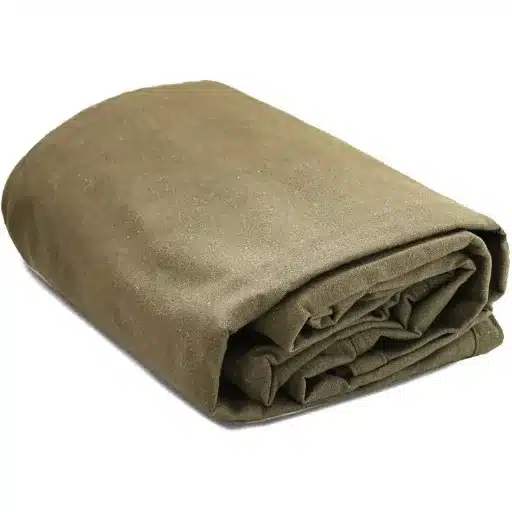
Canvas Tarps
Use cotton tarps canvas tarps with some other application of dirt or protein, sometimes creating specific coatings to render them at least water repellant. While not strictly waterproof, treated canvas tarps do produce a fairly water repellant cover, in that, they can be used for covering equipment, outdoor furniture, or agricultural products. According to recent search data, users often inquire if canvas tarp can sustain the effects heavy rain. That question is very much dependent upon the level of treatment applied on the tarp. Heavy-duty wax-coated canvas tarps will certainly repel water for very long periods of time, but they might develop some amount of water ingress during extreme conditions, say long downpours. In case of full waterproofing for a variety of hazards, the poly tarp or vinyl-coated tarp would be a better option.
Polyester Tarps
Polyester tarps work as well for applications requiring durability and water resistance. The search trends data reveal that many people want to know if polyester tarps are good for long outdoor use under heavy rains. Their answer lies in the construction characteristics. Polyester tarps become more water resistant, ironically, than untreated canvas tarps due to the synthetic fibers being tightly woven. Most good polyester tarps are then coated for UV resistance and made waterproof against rain and other hard weather conditions. Users have to keep in mind that the water resistance durability may differ with the thickness and treatment level of the tarp. Edges should be reinforced, and seams heat-sealed for best results when buying a polyester tarp for protection against heavy rainfall.
Heavy-duty waterproof tarps
The assessment of heavy-duty waterproof tarps must be turned to the technical specifications contributing to their efficacy in stressing environments. According to the latest search data regarding the engine, users have often asked about the tarps’ longevity and material composition. Designed with HDPE (high-density polyethylene) and heavy-grade PVC, these top-tier materials afford an exceptionally challenging tensile intensity and abrasion resistance almost satisfactory for fulfilling the needs of all interference warehouses. Some of the modern tarps also incorporate cross-woven fibers that attach to the concern most often raised, which is tearing under stress.
🔬 Technical Features:
- HDPE (high-density polyethylene) construction
- Heavy-grade PVC materials
- Cross-woven fibers for tear resistance
- UV stabilization with inhibitors
- Multi-layer design with thermal bonding
Furthermore, questions have put UV stabilization into perspective. Thus, the modern-scale heavy-duty tarps are treated with UV inhibitors to let the tarps not undergo material degradation when exposed to sunlight for long periods of time, sustaining this would then go on to provide a usable window for the user. The multi-layer design, which is usually combined with thermal bonding, guarantees not just water resistance but also resistance to extreme level temperature fluctuations, which then becomes very important for industrial, agricultural, and construction applications. Users who are searching for some reliable tarps, while ensuring grommet placement and spacing for secure fastening in high winds, should prioritize certifications such as ISO standards for material reliability. Proper maintenance along with periodic inspections can increase the lifespan of these essential coverings.
Factors Affecting a Tarp’s Water Resistance
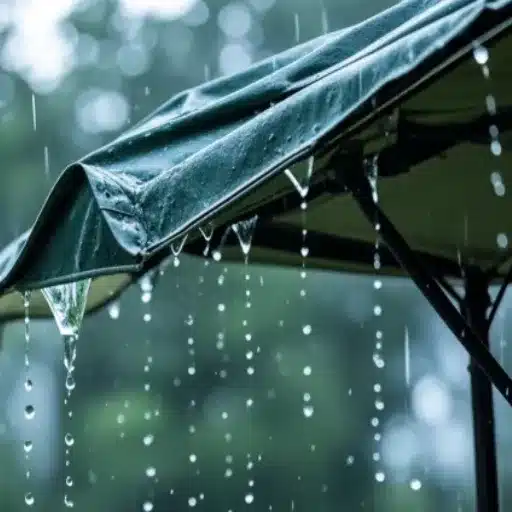
Material Composition
The capacity of a tarp to resist being soaked is heavily dependent on the fabric used in its making, as the fabrication dictates the different mechanisms presented to resist water penetration under various scenarios. Polyethylene, PVC, and canvas are quite common raw materials. Polyethylene tarp-making usually involves high-density-weave construction and lamination of polyethylene on the exterior side to confer water resistance and durability. PVC tarp, being very flexible and strong, gains its waterproof property through its well-layered construction integrating different vinyl coatings. Superior in breathability, canvas tarps are often applied with wax or oil coatings to enhance water resistance but perform poorly in long wet conditions compared to the synthetic types.
Other parameters such as denier count for fiber thickness and coating thickness directly influence the degree of water resistance and should therefore be considered by the users when considering tarp materials. Search trends aggregated from ‘s data reveal that users mostly ask the advantage of polyethylene tarps over another, mainly in humid areas and industries. This gives credit to polyethylene for being able to keep its shape even in constant presence of moisture. Users should, therefore, select tarp materials that fit their specific temple and operational requirements for the best performance.
Manufacturing Methods
In manufacturing, polyethylene tarps undergo a series of steps to warrant very high durability, moisture resistance, and adaptability under different conditions. The factory process initiates with extruding polyethylene resin into sheets and then laminating the sheets for improving weatherproofing and tensile strength. The sheets are thus woven into a mesh fabric, creating the cloth that is at the same time strong yet flexible. Modern coating processes then impart UV resistance and waterproof qualities, suitable for long-term exposure to sunlight and rain.
🏭 Manufacturing Process:
- Extrusion of polyethylene resin into sheets
- Lamination for weatherproofing and tensile strength
- Weaving into mesh fabric
- Application of UV resistance and waterproof coatings
- Heat-sealing technology for seam reinforcement
From recent search data, it turns out that users inquire about the relation between the manufacturing processes to the advantage of polyethylene tarps over other materials. The improved lamination and coating process, combined with the properties inherent of polyethylene, can make these tarps outperform alternatives such as canvas or vinyl in high-humidity and industrial settings. Heat-sealing technology is also used to maintain consistent performance in challenging environments, reinforcing the seams so that these seals do not tear under load. The aforementioned technological advances, which guarantee the success of polyethylene tarps in industry application, speak for themselves.
Environmental Factors and Their Influence on Polyethylene Tarps
Environmental factors like UV rays, temperature fluctuations, and moisture bear greatly on the expected lifecycle and performance of polyethylene tarps. Long-term exposure to ultraviolet rays emitted by the suns and the char, changing from sunlight to other mysterious potencies, degrades the polymer chains within polyethylene to finally make the latter brittle and diminish eventually in tensile strength with age. Manufacturers, therefore, use the method of embedding UV stabilizers in the material during production, thereby greatly increasing its longevity outdoors.
☀️ Environmental Impact Factors:
- UV Rays: Degrades polymer chains, causes brittleness
- Temperature Fluctuations: Causes thermal expansion and contraction
- Moisture: Affects long-term durability and performance
- Solution: UV stabilizers embedded during production
Data trends from ‘s search engine reveal a steady rise in the frequency of queries for such terms as “UV-resistant tarps” and “weatherproof polyethylene,” indicating perhaps a rise in consumer consciousness over the environmental problem and the need for a resilient material. Besides, extremes of temperatures, from freezing to burning conditions, will cause polyethylene tarps to undergo thermal expansion and contraction, thereby evidencing performance issues if being stored improperly or applied improperly. Hence, protocols for maintenance, such as proper storage of tarps in controlled environments and periodic inspections for any damage, keep them most useful in diverse environmental settings.
Choosing the Right Tarp for Your Needs

Assessing Your Particular Needs
To properly select the correct tarp, several important factors must be considered to maximize the functionality and longevity of each tarp. The initial decision one must make is to determine the main purpose it will serve-the tarp could be used for weatherproofing, construction, transportation, or agricultural purposes-very different considerations might arise depending upon the application at hand concerning UV resistance, water resistance, or tear strength. Polyethylene waterproof tarps remain, according to recent search trends, the most searched item for general use, whereas heavy PVC tarps are now more desired in the industrial sector for construction purposes due to their strength and longevity.
📋 Key Considerations Checklist:
- Purpose: Weatherproofing, construction, transportation, or agricultural use
- Environmental Conditions: Temperature fluctuations, rainfall frequency, UV radiation levels
- Dimensions: Coverage area plus additional measurement for tie-downs
- Durability Requirements: Frequency of use and carrying load
- Specialized Needs: High-humidity or extreme cold conditions
Consider the environment that the tarp will be subjected to, including any fluctuations in temperature, how often rainy days occur, and the level of ultraviolet radiation. Extreme conditions will certainly give considerations to specialized tarps; for instance, high-humidity conditions call, or in extreme cold, call for a completely different yardstick of selection. It is wise to determine the essential dimensions to be covered as well as the additional measurement required to tie down the tarp. A second consideration is the needs of durability and life expectancy of its frequent use and carrying load. These considerations, when taken in conjunction with the current best practice in industry, will significantly aid in determining with confidence the right tarp for one’s application, with the required specifications satisfied.
The Best Waterproof Tarps for Various Applications
The best waterproof tarps for each application need to be selected by matching the material, thickness, and coating properties of the tarp for the assigned task. Poly tarps remain quite popular due to their water resistance, UV protection, and low cost, according to recent data. For a construction site or heavy-duty outdoor use, 10- to 14-mil poly tarps provide good durability and resistance to punctures through reinforced edges, offering long-term protection against rain and adverse weather.
🏗️ Construction & Heavy-Duty Outdoor Use:
Recommended: 10- to 14-mil poly tarps
Features: Good durability, puncture resistance, reinforced edges
Protection: Long-term rain and adverse weather
🏕️ Camping & Recreational Activities:
Recommended: 5- to 8-mil multi-purpose light tarps (blue poly tarps)
Features: Waterproof, easy to carry, practical
Protection: Rain protection, ground cloth for moisture prevention
🚛 Truck Bed Covers & Industrial Equipment:
Recommended: Vinyl-coated tarps
Features: Industrial-grade waterproofing, high tensile stress resistance
Protection: Extreme weather conditions, agricultural storage
🌱 Longevity & Environmental Consideration:
Recommended: Advanced PVC tarps or custom-fitted waterproof covers
Features: Adapted to special requirements, environmentally conscious
Protection: Maximum durability and sustainability
💡 Pro Tip: Always cross-check product specifications, inclusive of water column ratings and tear resistance of the material, in your consideration of which waterproof tarp best fits your application. Intertwining the technical knowledge with user experience and endorsements ensures that the best choice is selected.
Small Tarps vs Heavy Duty Tarps, Which is Right for You?
Small tarps or heavy-duty tarps bear their decision mainly dependent on how far the specific application goes into durability and performance in the given environment. Small tarps are mostly lightweight polyethylene or vinyl and best for small spaces or short protection needs where movement is heightened over long-term resistance. They work best for covering small equipment, furniture, or garden materials under generally mild weather conditions.
Heavy-duty tarps offer more protection and are constructed as well with reinforcements of materials such as PVC or canvas thousands of deniers thick in coatings. Heavy-duty tarps are meant for working with extreme weather conditions, UV, and abrasive wear, very suitable for construction sites, industrial applications, or extended outdoor use. Search data from reveals the growing interest among heavy-duty tarps in areas where weather conditions tend to be severe, thereby pointing to consumer interest for more resilient solutions.
Therefore, small tarps are better in places where portability and cost are key considerations, while heavy-duty tarps are the best consideration for protection and performance in more demanding applications. Check on the materials specification of the tarp concerning longevity requirements and the ability to withstand environmental hazards.
Frequently Asked Questions (FAQs)
❓ Are All Tarps Made Water Repellent?
No, not all tarps come with water repellency. Many tarps, especially those heavy duty and waterproof varieties, are made to repel water, whereas others are merely water-resistant. Water-resistant tarps provide limited protection against water and moisture and are really not the touted waterproof kind. A significant amount of difference can be made by choosing the right waterproof tarp for water protection on an outdoor adventure. You should check its specs before buying it to make sure it fits your need for water protection.
❓ What’s the Difference Between Waterproof and Water-Resistant Tarps?
The actual difference lies in their ability to withstand exposure to water. Waterproof tarps come into play when you need total water protection, while water-resistant tarps can fight against light moisture but are not so good under heavy downpour. Waterproof tarps provide the best shield to water, and the best choices are usually tarps made from heavy-duty poly or waterproof canvas. Consider the conditions in your environment and the possibility of adverse weather when choosing which type will work better for your lifestyle.
❓ What About Durability in Waterproof Tarps?
Waterproof tarps are designed to be most durable, with materials that are generally resistant to rip and tears. Heavy duty waterproof tarps can stand adverse conditions and be used for a long time. Durability is key when thinking of tarps- especially when for outdoor use where exposure to elements is inevitable. Also, consider UV resistance as a factor that helps to prolong tarp life by protecting it from sun damage. In any case, the best tarp will be one that combines waterproofing with durability to suit your needs perfectly.
❓ Could I Use a Canvas Tarp for Waterproof Protection?
What is practically fantastic is that a canvas tarp can waterproof your specific requirement and still be breathable. Canvas tarps are commonly used for several purposes: firewood covers and pool covers being some examples of these uses. In their best treatment, they can resist water and still withstand wear and tear. It is worthwhile to check that whatever canvas tarp you aim to buy says it is waterproof, as not all canvas tarps are made equal in water protection. For someone who wants to work with natural materials, a waterproof canvas tarp is the way to go.
❓ What to Consider When Selecting the Appropriate Tarp?
Consider the tarp’s intended use, material, and waterproofing when selecting one. Heavy-duty tarps are good for tougher applications, while lighter ones might be just fine as temporary cover. Also, consider whether you need a tarp that is fully waterproof or one that’s water-resistant would do. Another major aspect to consider is size: The larger tarp would be useful for covering bigger areas while smaller ones could be used for very selective protection. In the end, your choice should be a tarp that reflects the balance your current situation needs between durability, water protection, and versatility.
📚 Reference Sources
From Market Stalls to Heavy-Duty Covers
This blog from Boston University discusses the waterproof properties of polyethylene tarpaulins and their versatility.
Discovering the Best Truck Tarpaulin Options
Butler University provides insights into PVC tarpaulins, highlighting their durability, waterproofing, and resistance to abrasion and chemicals.
Tarps/Salvage Covers, Flame Retardant
This resource from UNICOR explains the water-resistant and breathable properties of canvas tarpaulins, along with their fire-resistant treatment.

